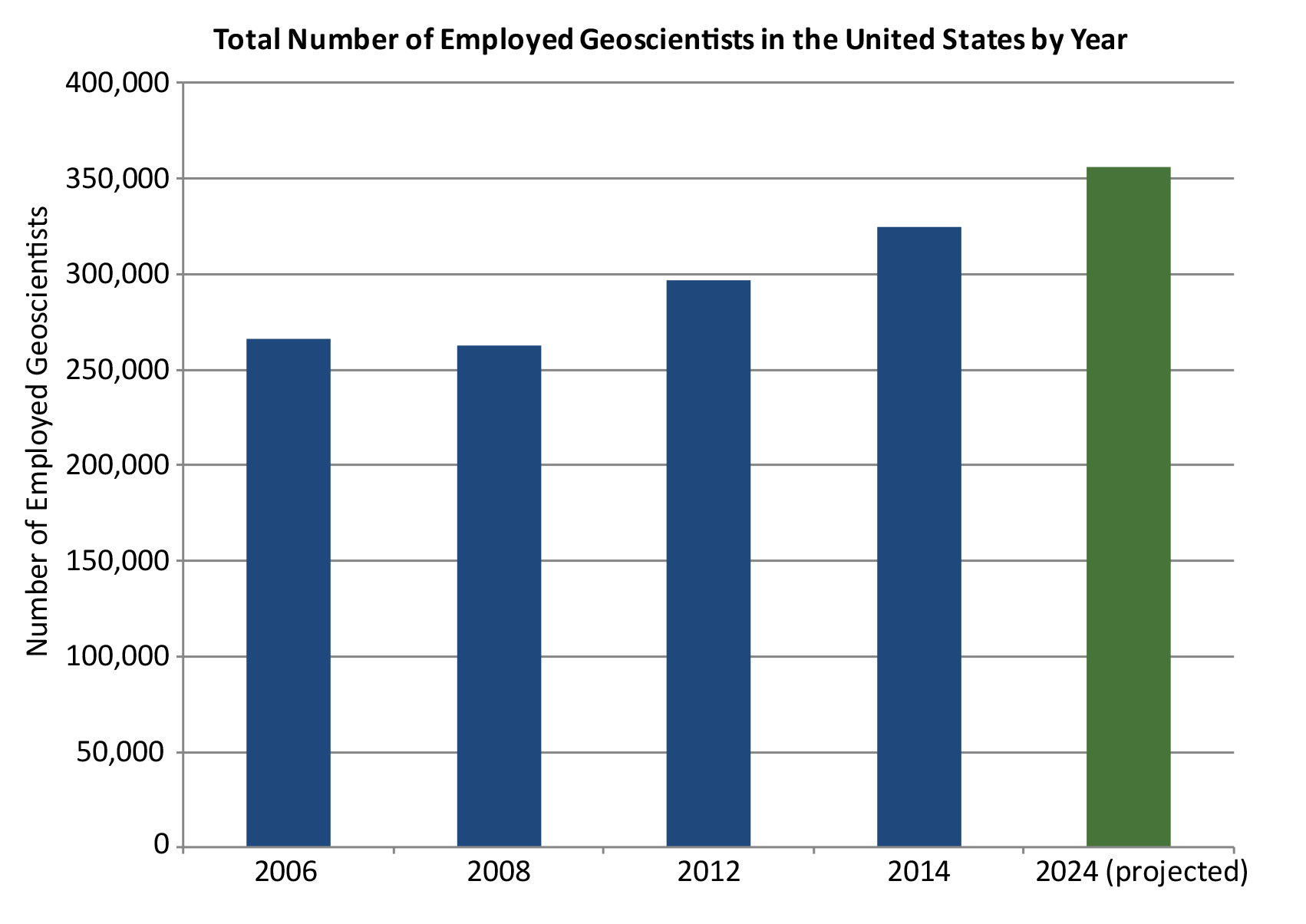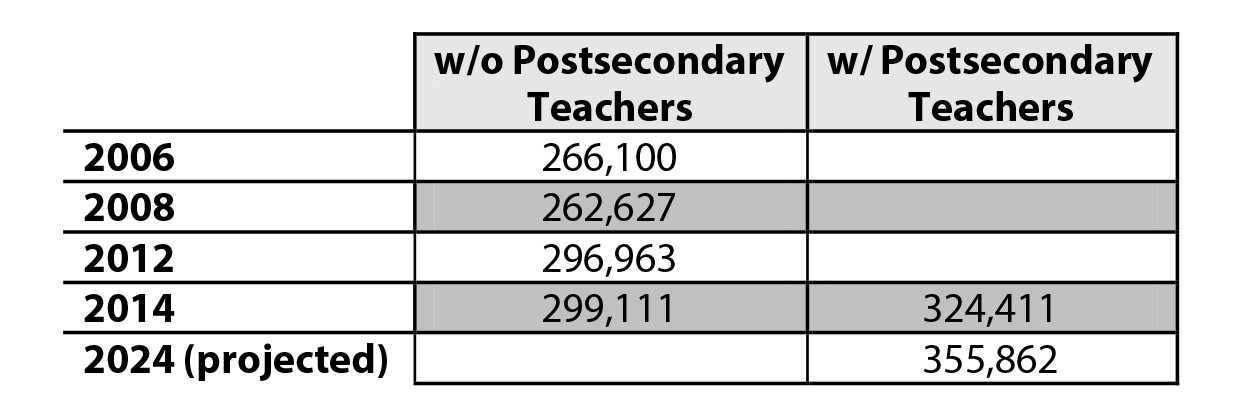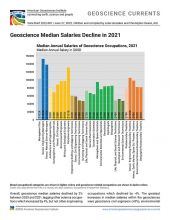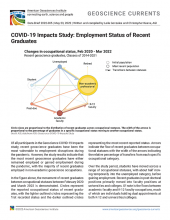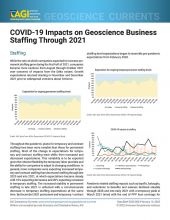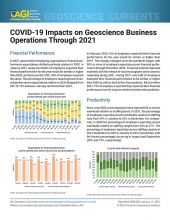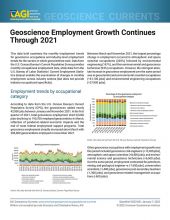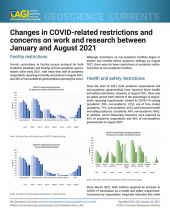Every two years, the AGI Workforce Program synthesizes and analyzes national data sets that track the changes in the labor workforce to look for changes in the geoscience workforce. To provide an accurate count of the geoscientists working in the United States, AGI's definition of the geosciences is regularly compared to the labor definitions provided by the U.S. Bureau of Labor Statistics (BLS). For the Status of the Geoscience Workforce Report 2016, which will be publicly available soon, a revisit to the occupational listings revealed a difference in the definition for geoscientists working in colleges and universities compared to the listings of postsecondary teachers in atmospheric sciences, earth sciences, marine sciences, space sciences, environmental sciences, and geography. In previous years, the counts for these postsecondary teacher occupational categories were not included in the overall count of geoscientists in the U.S. workforce, but for the 2016 report, these occupations were included in the overall count.
The figure shows the changing number of employed geoscientists in the United States since 2006. While there appears to be steady growth from 2008 to 2014, the number of employed geoscientists do not include the occupational categories of geoscience postsecondary teachers as counted by the BLS. The table shows the total numbers of employed geoscientists as calculated by AGI. Actual growth between 2012 and 2014 was approximately 2,148 geoscientists if postsecondary teachers are omitted. Using the BLS employment projections data, AGI expects an increase in the number of geoscientists employed in the U.S. to increase by 10% over the next decade.
With each new edition of the Status of Geoscience Workforce report, AGI will continue to evaluate data synthesis and analysis procedures in order to provide the geoscience community with the most accurate insight into the changing dynamics of the geoscience workforce.


